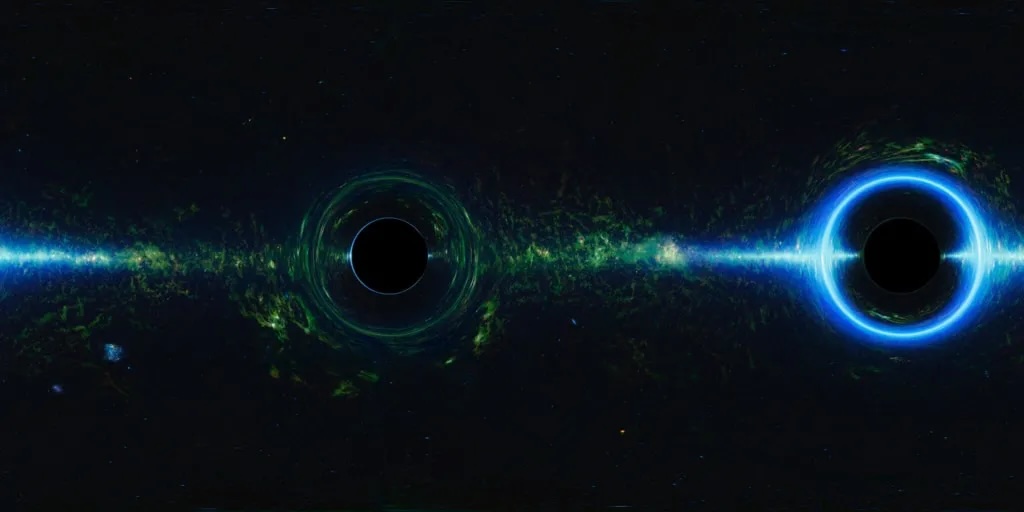It’s that time again! Time for another model that will finally solve the mystery of dark matter. Or not, but it’s worth a shot. Until we directly detect dark matter particles, or until some model conclusively removes dark matter from our astrophysical toolkit the best we can do is continue looking for solutions. This new work takes a look at that old theoretical chestnut, primordial black holes, but it has a few interesting twists.
Primordial black holes are hypothetical objects formed during the earliest moments of the Universe. According to the models they formed from micro-fluctuations in matter density and spacetime to become sandgrain-sized mountain-massed black holes. Although we’ve never detected primordial black holes, they have all the necessary properties of dark matter, such as not emitting light and the ability to cluster around galaxies. If they exist, they could explain most of dark matter.
The downside is that most primordial black hole candidates have been ruled out by observation. For example, to account for dark matter there would have to be so many of these gravitational pipsqueaks that they would often pass in front of a star from our vantage point. This would create a microlensing flare we should regularly observe. Several sky surveys have looked for such an event to no avail, so PBH dark matter is not a popular idea these days.
This new work takes a slightly different approach. Rather than looking at typical primordial black holes, it considers ultralight black holes. These are on the small end of possible masses and are so tiny that Hawking radiation would come into play. The rate of Hawking decay is inversely proportional to the size of a black hole, so these ultralight black holes should radiate to their end of life on a short cosmic timescale. Since we don’t have a full model of quantum gravity, we don’t know what would happen to ultralight black holes at the end, which is where this paper comes in.

As the author notes, basically there are three possible outcomes. The first is that the black hole radiates away completely. The black hole would end as a brief flash of high-energy particles. The second is that some mechanism prevents complete evaporation and the black hole reaches some kind of equilibrium state. The third option is similar to the second, but in this case, the equilibrium state causes the event horizon to disappear, leaving an exposed dense mass known as a naked singularity. The author also notes that for the latter two outcomes, the objects might have a net electric charge.
For the evaporating case, the biggest unknown would be the timescale of evaporation. If PBHs are initially tiny they would evaporate quickly and add to the reheating effect of the early cosmos. If they evaporate slowly, we should be able to see their deaths as a flash of gamma rays. Neither of these effects has been observed, but it is possible that detectors such as Fermi’s Large Area Telescope might catch one in the act.
For the latter two options, the author argues that equilibrium would be reached around the Planck scale. The remnants would be proton sized but with much higher masses. Unfortunately, if these remnants are electrically neutral they would be impossible to detect. They wouldn’t decay into other particles, nor would they be large enough to detect directly. This would match observation, but isn’t a satisfying result. The model is essentially unprovable. If the particles do have a charge, then we might detect their presence in the next generation of neutrino detectors.
The main thing about this work is that primordial black holes aren’t entirely ruled out by current observations. Until we have better data, this model joins the theoretical pile of many other possibilities.
Reference: Profumo, S. “Ultralight Primordial Black Holes.” arXiv preprint arXiv:2405.00546 (2024).

